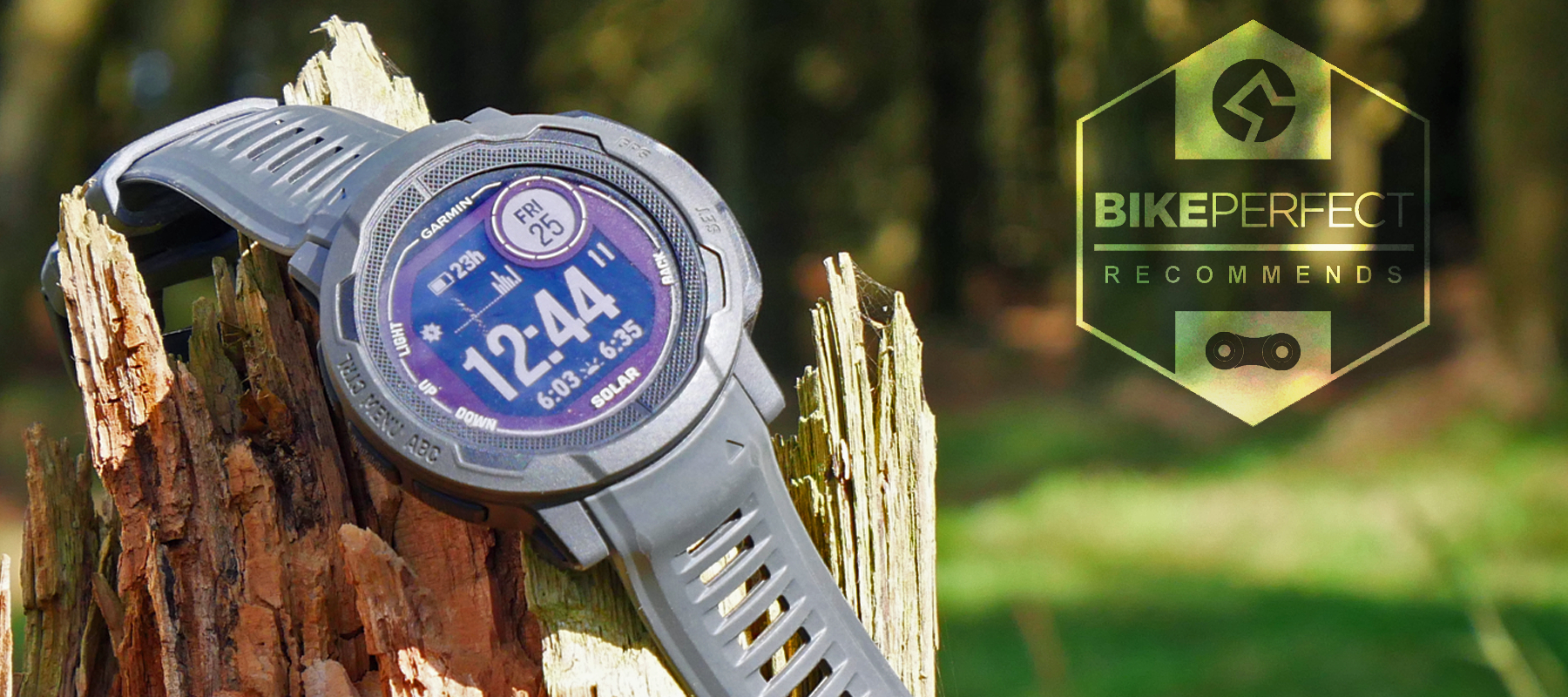Bike Perfect Verdict
The Garmin Instinct 2 is a feature-rich adventure smartwatch that's ideal for mountain bikers who prioritize accurate ride tracking rather than mid-ride data peeping. While we haven’t experienced the unlimited battery life promises of solar, the battery life of the Instinct 2 is still very impressive.
Pros
- +
Rugged design
- +
Loads of health metrics
- +
Accurate GPS tracking
- +
Easy to use
- +
Solar power extends battery life
Cons
- -
Long load times for routes over 15km
- -
Rugged outdoor looks won't appeal to all
Why trust BikePerfect
The Instinct 2 may now be Garmin’s entry-level adventure and multi-sports smartwatch (the original Instinct is no longer officially available, but you can still pick it up for a bargain price), but this rugged little wearable is crammed with features and sensors. The Solar version we're reviewing is claimed to be the first Garmin Watch to achieve unlimited battery life – in smartwatch mode rather than when recording activities.
That's a big bonus for those that often stay out longer than expected on a ride, or are just bad at charging things and the excellent functionality makes it a tempting proposition for riders who are looking for a versatile alternative to the best MTB GPS computers.
We have been mountain biking, bikepacking and wearing the Instinct 2 Solar day-to-day to find out what the Garmin Instinct 2 Solar is like to live with.
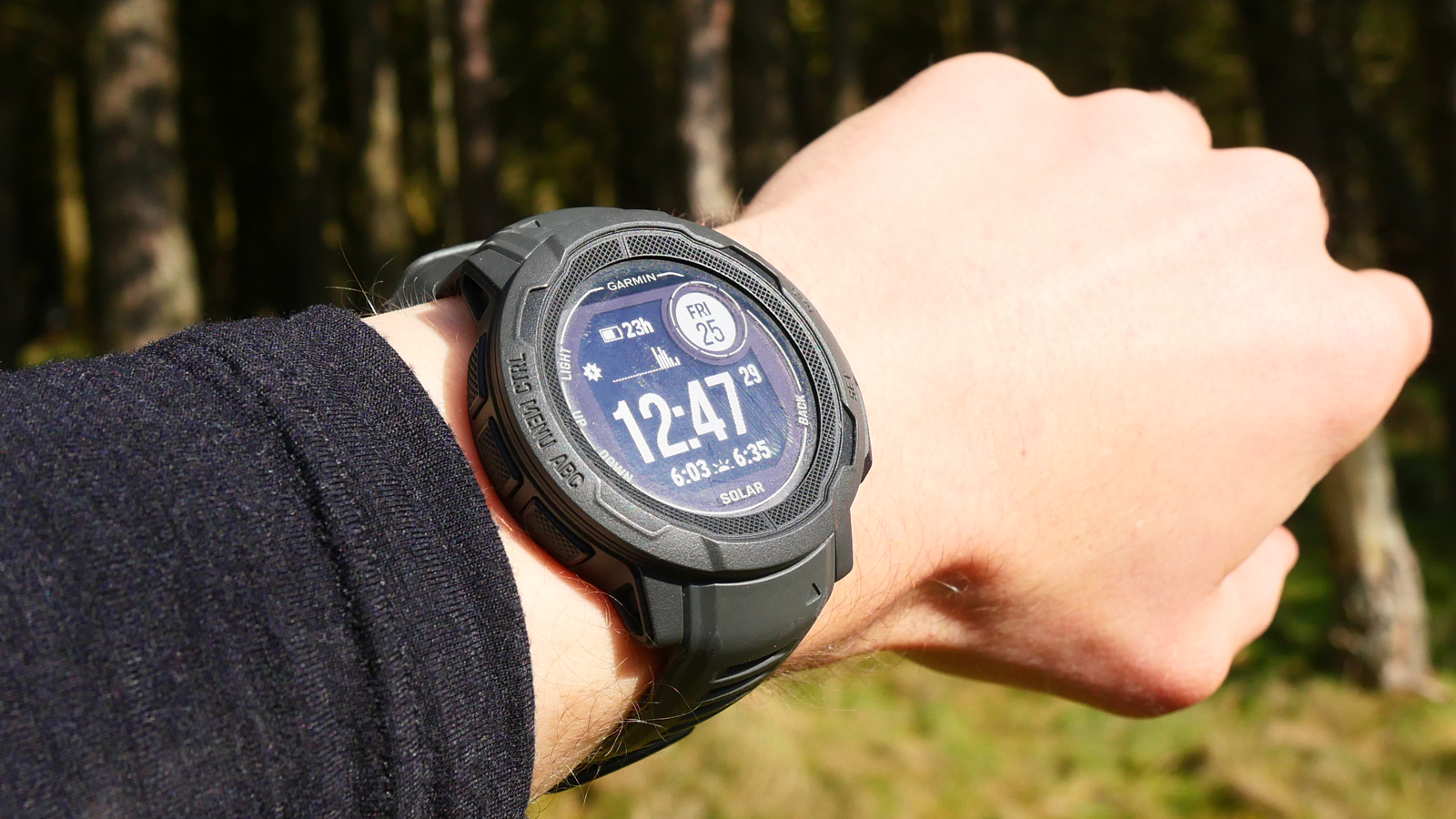
Design and performance
Garmin offers the Instinct 2 in a range of different options. To start with there are two sizes, we have the standard 45mm version but there's also a smaller 40mm ‘S’ version for those with more petite wrists. Garmin also makes a non-solar version which takes a hit on potential battery life but is also $100 / £90 cheaper. There's also some special editions of the Instinct 2, although these are tailored for specific use cases with specific features for surfing, tactical, or trucking uses.
The Instinct 2 features a rugged feeling fiber-reinforced polymer casing which is waterproof rated to 10 ATM, which is equivalent to a depth of roughly 100m. The watch comes standard with a silicone band, although Garmin does offer a customization service if you want a different strap.
The smartwatch uses a Power Glass screen to harvest solar energy and underneath is a basic black and white display. The display has a decent amount of detail too which enhances some of the graphs that the watch shows on-screen.
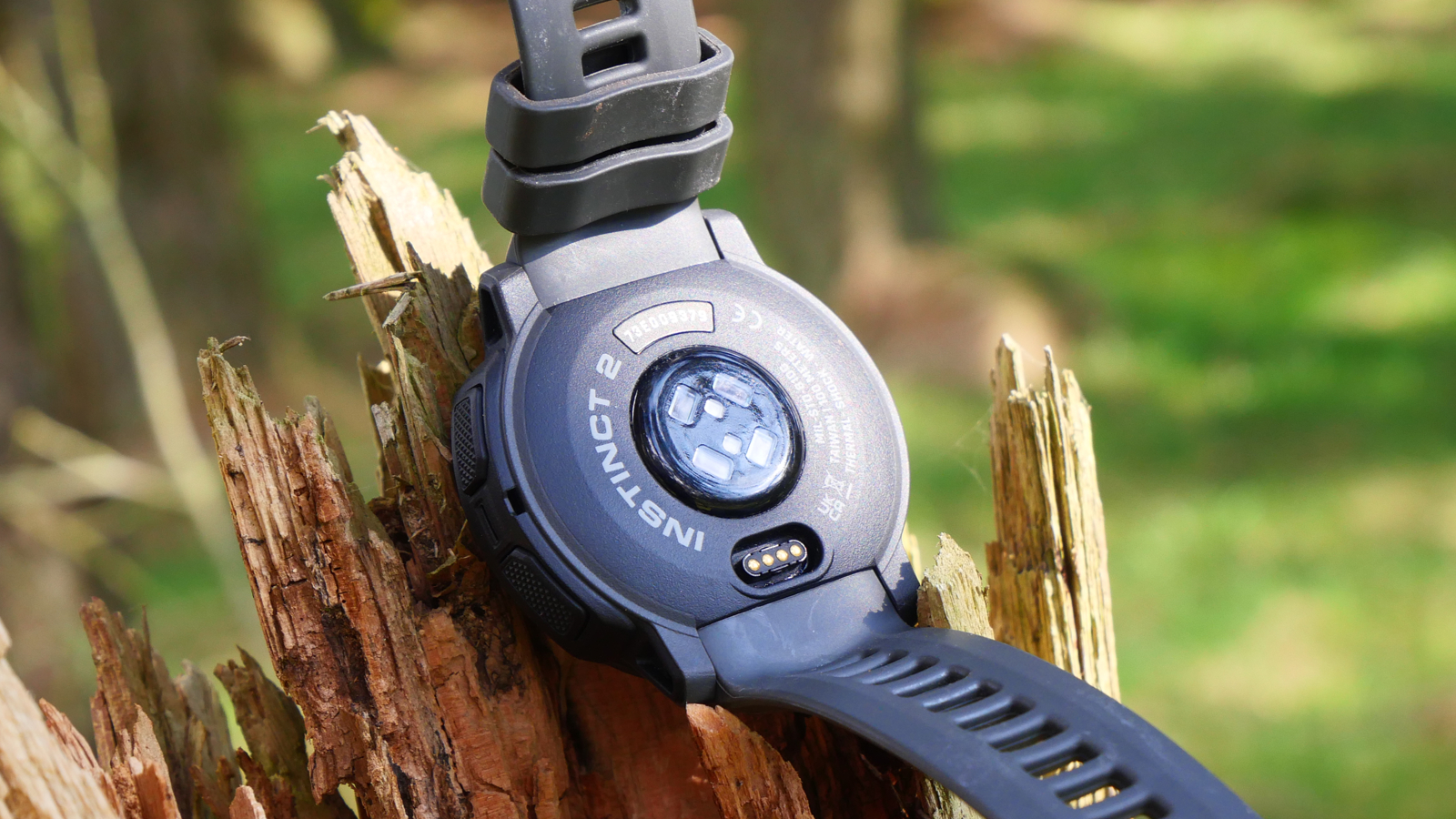
The watch is charged via a Garmin-specific cable that plugs into the rear of the watch. Charge times are very fast, taking less than two hours for the watch to fully charge from empty.
The Instinct 2 can pick up GPS, GLONASS, and GALILEO signals to keep activity tracking as accurate as possible and recording intervals can be set to either smart recording or every second for better accuracy.
Navigation of the menus is performed by the five buttons on the side of the watch. There is a watch menu, widget menu, and menu scrolling buttons on the left and the select/GPS and back button on the right. The watch functionality is managed using widgets, the widgets and order can be modified and easily scrolled through using the buttons.
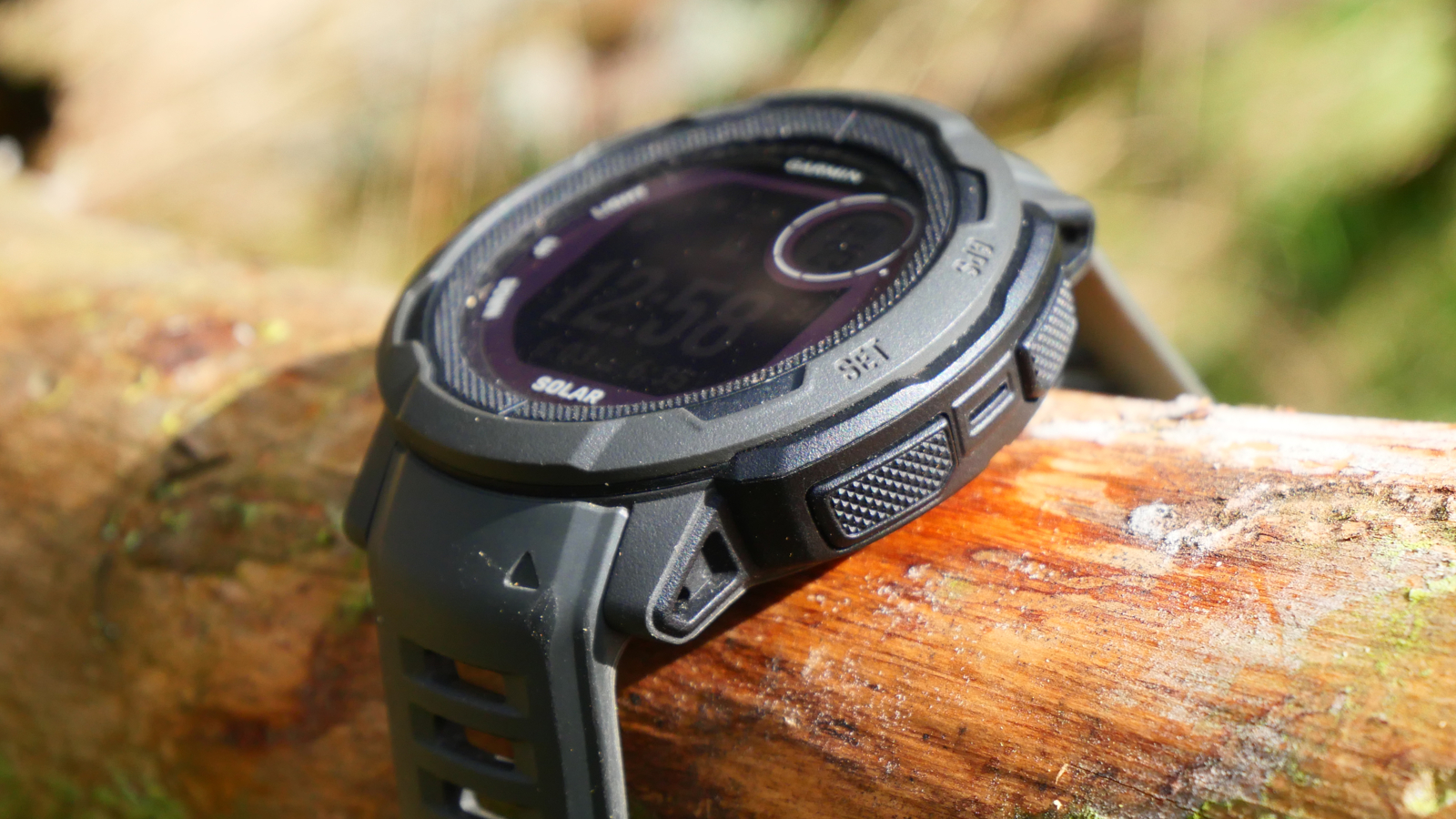
If you want to connect the Instinct to another device, it will communicate through Bluetooth or ANT+. We didn’t have any problems connecting the watch to other devices, whether it was power meters, a smartphone, or using the watch to broadcast heart rate data to a GPS head unit.
The Instinct 2 can also connect to your phone to receive notifications and control music. Plus, there's Garmin Pay which allows you to make contactless purchases using the watch. All the workout and health data recorded by the Instinct 2 is automatically synced with the Garmin Connect app so you can browse and compare stats from your day or activities. It's compatible with the ConnectIQ app as well which allows users to download additional software and custom features to the watch.
Riding experience and routing
GPS is usually pretty quick to lock onto the satellites and once connected it has been very reliable at holding on to the signal. There have been a couple of instances where the watch has lost connection causing glitches to the tracking but over the five months of use it's overall been extremely reliable.
The GPS accuracy is really impressive too, holding a very tight line in the open and still tracking well under thick tree cover. We were also impressed by the heart rate accuracy as well which gave a consistent reading and didn’t need to be cranked up tight which can then induce arm pump.
Day to day the Instinct is a comfortable watch to wear. I wasn't the biggest fan of the feel of the Silicone strap but once the watch is on it wasn't noticeable. The buttons are textured and easy to press, and all the important functions are intuitive to navigate, although there are a few lesser-used menus and settings that are a bit tricky to find. The watch can vibrate and/or beep to alert you to notifications or other functionality like new laps or autopause activation.
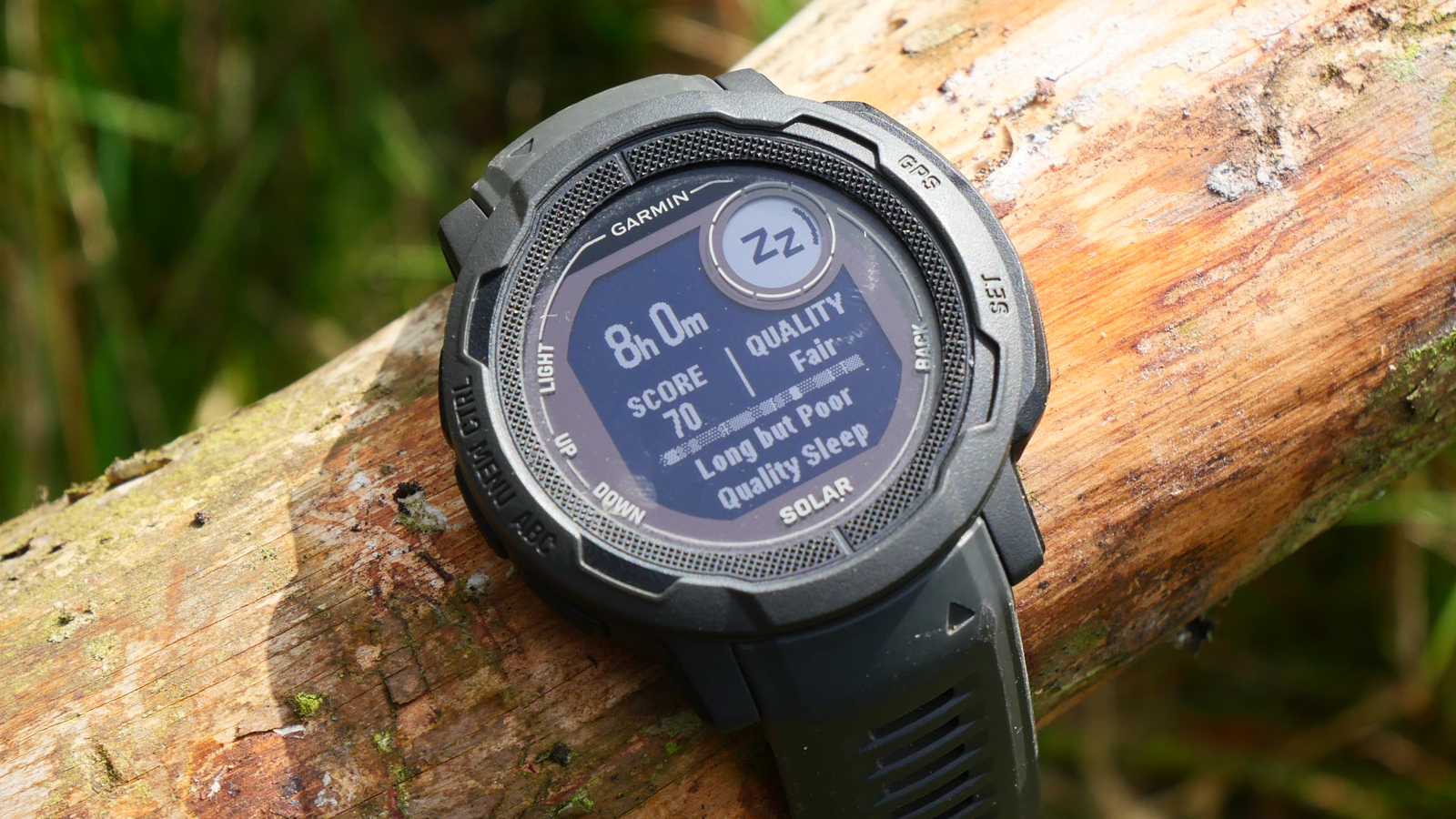
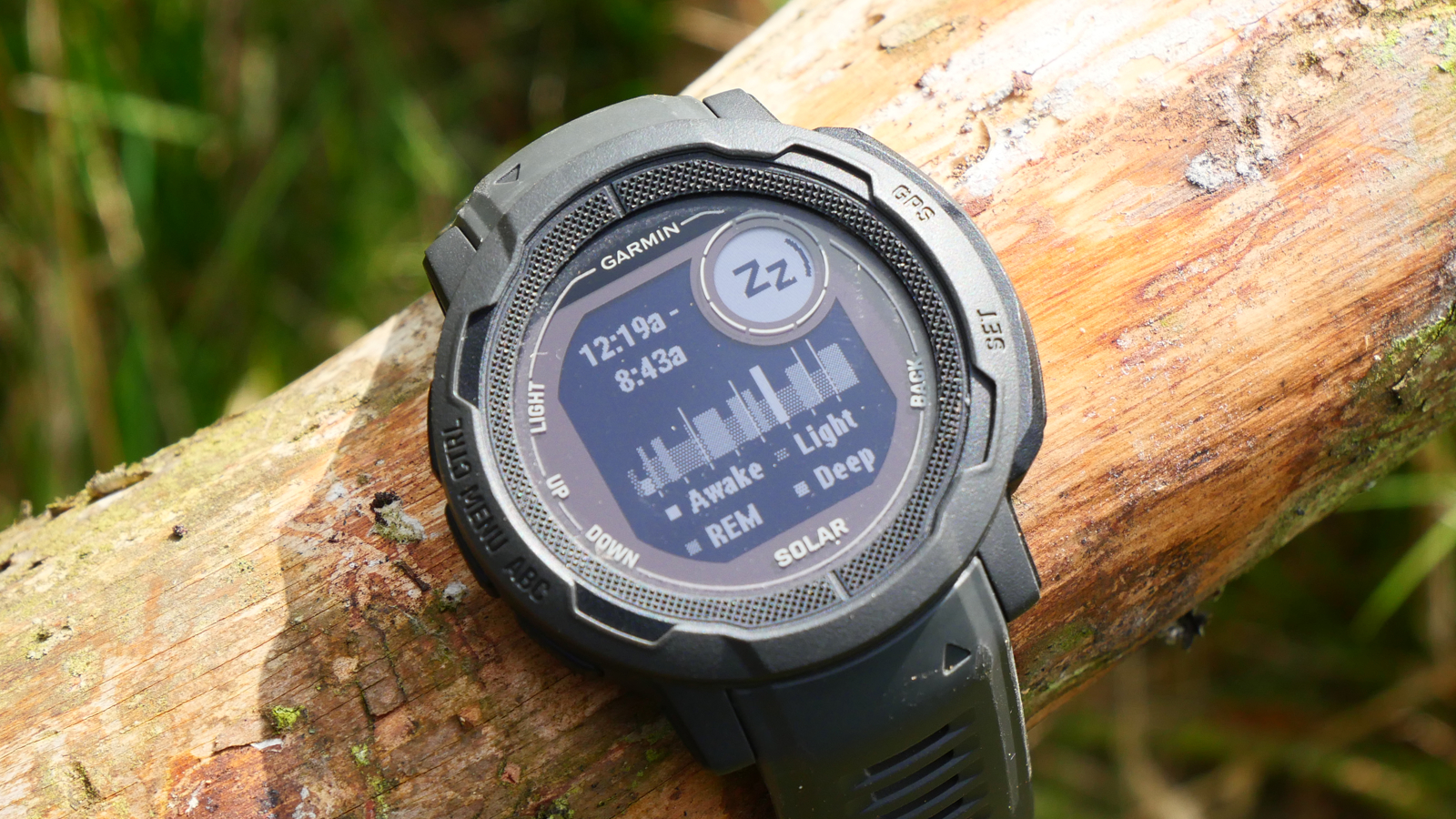
The health metrics recorded by the Instinct 2 are pretty comprehensive, documenting everything from heart rate, blood oxygen (pulse ox/SpO2) readings, and breathing rate (respiration), which are then used to measure stress and recovery. One of most interesting is the sleep feature which can record your sleep cycles and score your night's kip. Using this data also gives you tips on how to improve your sleep, something which a lot of people could probably benefit from. Body battery is another interesting metric and can help you manage your energy levels throughout the day or be assured that you are recovering well.
The Instinct 2 is packed with different activity profiles which offer customizable screens and some specific features for all your favorite sports. We found the default ride windows showed lots of relevant and easy-to-read data fields including useful gauge-style displays for quickly glancing at heart rate or power output. Switching to other sports not only has different data screens but also special features, skiing/snowboarding for example which pauses the activity when it senses you are on a lift.
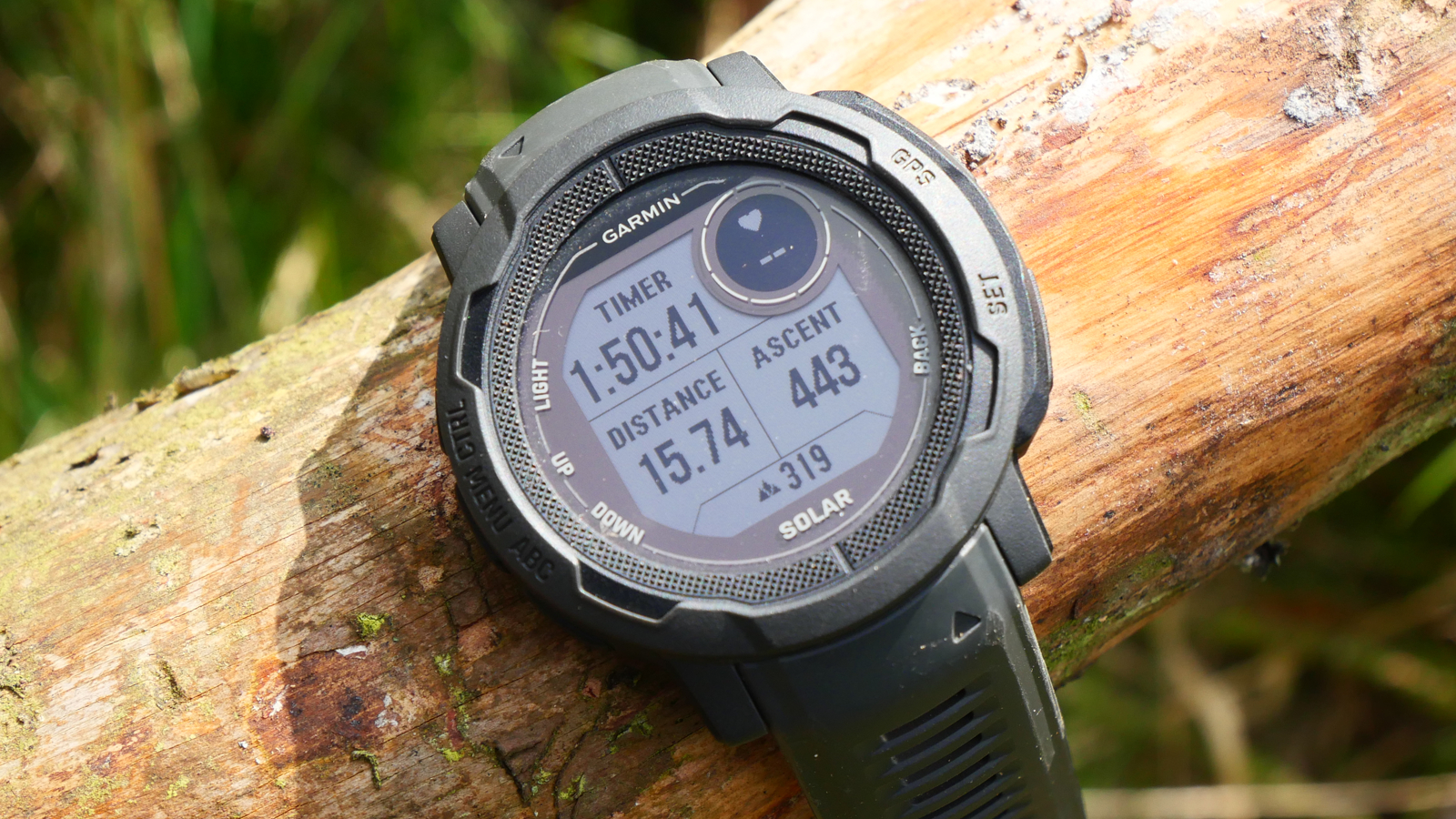
If you ride with a power meter, the Instinct 2 will also recommend suggested workouts which is a nice touch if you want to dabble in some training. In practice, we found these to be a bit convoluted to follow as it's hard to consistently monitor the current interval, upcoming intervals, and power output using a watch as you need to take your hands off the handlebars to look at the screen. Its still a nice feature to have, but if you are serious about training a dedicated head unit is going to be much better.
The solar feature is going to be a big draw for many users, although we struggled to reach the claimed unlimited battery life, in fact, we only saw the infinity symbol once after sitting it on the window sill in direct sunlight. Garmin quotes that the Instinct 2 Solar only needs three hours per day outside in 50,000 lux conditions for unlimited battery life, but as the Instinct doesn’t give you solar stats in lux, only in percentage, it's hard to determine how much light the watch is actually absorbing day-to-day.
I would average over a week of battery life with full 24/7 health monitoring and some GPS activities thrown in. Battery life obviously varies based on GPS usage and sunlight, plus you could greatly extend it by reducing the number of health metrics the watch records, especially pulse ox as that burns through battery. In fact, turning pulse ox off extends the battery life from a quoted five days to 28 days. GPS run time was very good, especially on summer rides where the watch was able to get a good dose of sunshine. A nice touch is that when you enter GPS mode the watch shows how much battery run time you have so you know if you're going to have enough battery to get you to the end of your activity.
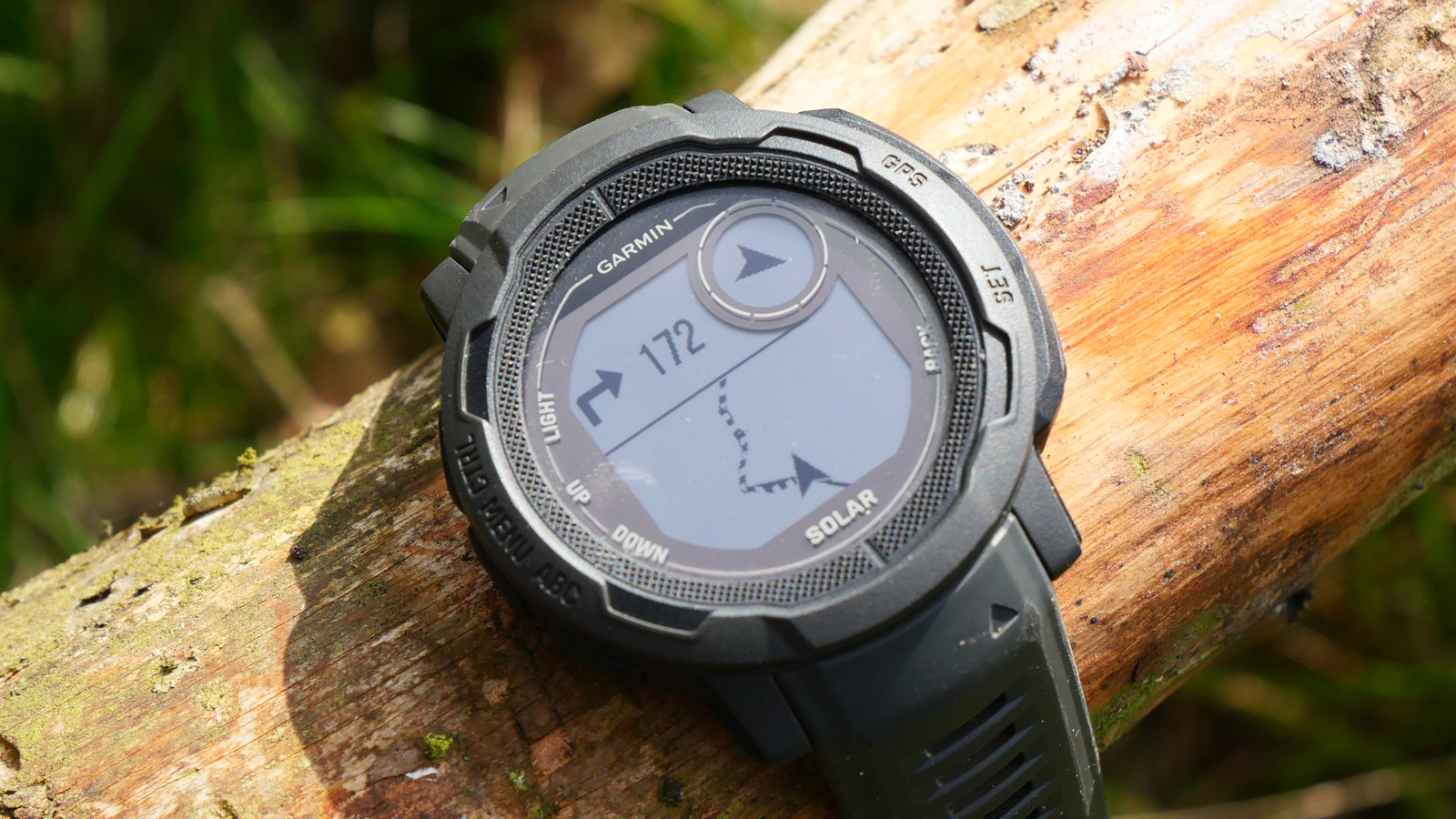
The Instinct 2’s weakest area is routing and navigation, well at least for cyclists it is. It’s reasonably usable if you’re going running or hiking as most people will more often stick under 15km. However, the watch struggles to load longer routes, so even shorter mountain bike rides are going to be problematic. It’s worth noting that the watch is limited to 50 route waypoints, which results in routes longer than around 20km being trimmed too. There are ways to cheat the system and you could make a longer route with reduced waypoints, but it adds a lot of additional work and greatly reduces accuracy. The watch can also take a long time to select and load up your chosen course which adds a frustrating delay when you want to get out on the trail. It doesn't have base mapping either, instead, a breadcrumb trail guides the way, but is enough for general trail navigation as long as your trail network isn’t too complicated.
Ultimately I ended up not bothering with the navigation most of the time as the hassle of loading the route, basic breadcrumb trail, and lack of additional features like ClimbPro or Strava Segments gave me little incentive to persevere with routing.
And on that subject, there are a couple of small features that I really miss on the Instinct 2 that I regularly use on my head units. Firstly Live Strava segments, it's not everyone's bag but I really like Strava segments and run live segments on all my other devices as I like to go for personal records sometimes. Secondly, ClimbPro is also a nice feature, although, in my opinion, its utility on a watch isn’t as useful as it is on a head unit positioned in front of you.
For those who want to simply record an activity, these features don’t matter but if you want these training tools you will need to upgrade to the Garmin Enduro or opt for an Edge 130 Plus head unit (or Garmin Edge 530 if you also want mapping) or above to get Strava segments and ClimbPro.
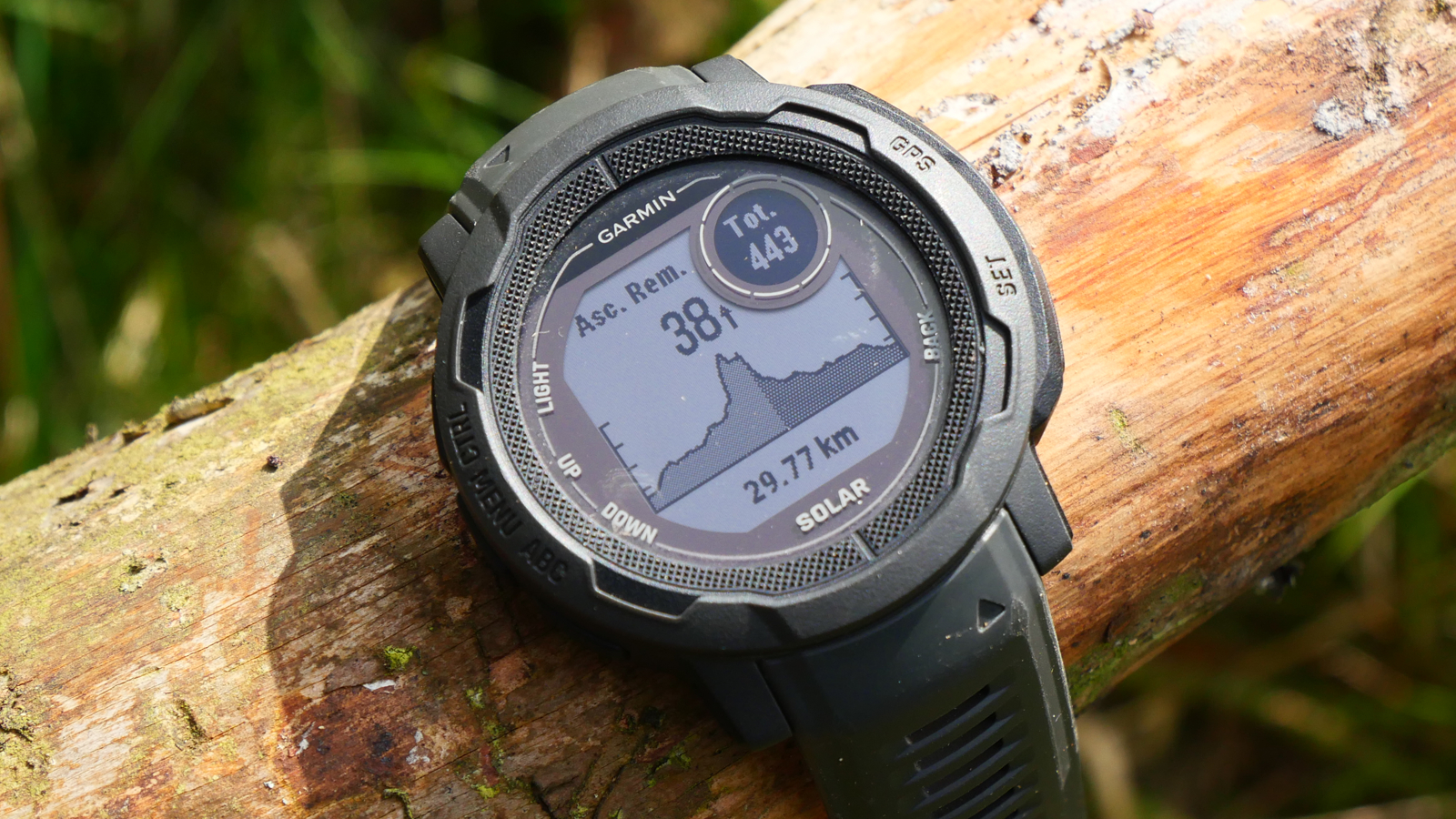
Verdict
If this review sounds a bit negative, I actually really like the Instinct 2 Solar. There is no doubt that the Instinct 2 is packed with great features, especially considering the device's lower positioning in Garmin’s adventure smartwatch range. The health and lifestyle data gives a very interesting insight into your day-to-day well-being and its rugged build and accurate GPS and elevation tracking mean it's great for recording activities on and off the bike. The different activity profiles mean it's ideal for people who want to track loads of different activities too. I like the Instinct 2 so much it's replaced my Garmin Edge 130 Plus head unit, which was my previous go-to low-profile MTB ride recorder.
Solar definitely helps lengthen battery life but even on a clear bright Scottish summer day, I struggled to get the infinite battery promise. That doesn’t mean there wasn’t a meaningful battery boost resulting in some impressively frugal battery drain, especially while recording activities in the light.
Overall, as a wearable device to track health and accurately record rides and other sports, the Instinct 2 is excellent and outperforms its closest competitor, the Wahoo Elemnt Rival GPS watch. Those who are serious about mid-ride metrics, chasing segment times, or want routing are going to be better served by a head unit or the more expensive Garmin Enduro watch though.
Tech specs: Garmin Instinct 2 Solar
- Price: $449.99 / £389.99
- Weight: 54g
- Color: Graphite, Mist Grey, Tidal Blue
- Size: 45 x 45 x 14.50 mm, fits wrists with a circumference of 135-230 mm
- Waterproof rating: 10 ATM (100m)
- Wireless connectivity: ANT+ and Bluetooth
- GPS: GPS, GLONASS, GALILEO
- Battery life: Smartwatch mode up to 28 days or unlimited with solar / GPS 48 hours with solar (claimed)

Graham Cottingham joined the BikePerfect team as our senior tech writer in 2020. With over 20 years of riding experience, he has dabbled in downhill, enduro, and gravel racing. Not afraid of a challenge, Graham has embraced bikepacking over the last few years and likes nothing more than strapping some bags to his bike and covering big miles to explore Scotland's wildernesses. When he isn’t shredding the gnar in the Tweed Valley, sleeping in bushes, or tinkering with bikes, he is writing tech reviews for BikePerfect.
Rides: Cotic SolarisMax, Stooge MK4, 24 Bicycles Le Toy 3, Surly Steamroller
Height: 177cm
Weight: 71kg
